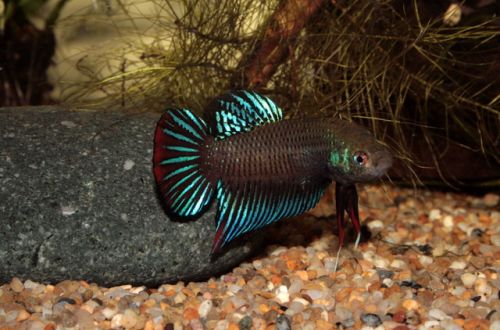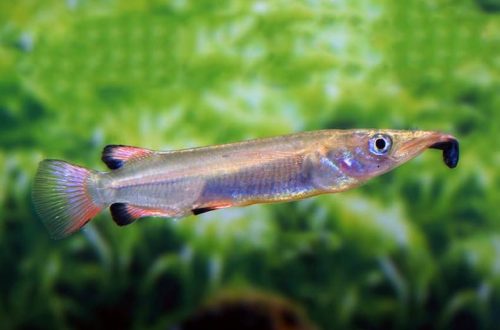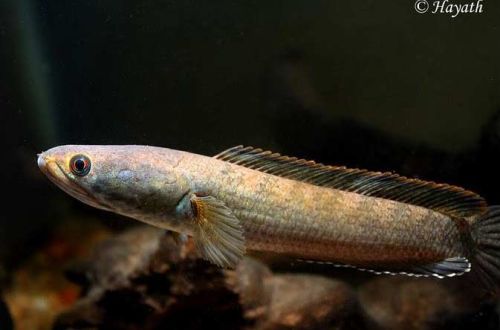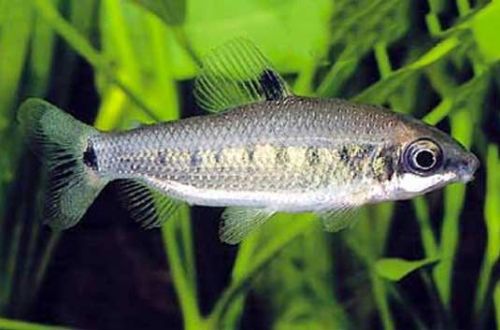
Cockerel black
Black betta, dwarf cockerel or non-belligerent black cockerel, scientific name Betta imbellis, belongs to the Osphronemidae family. There are quite a few colloquial names for the fish, but “dwarf” is not entirely correct, since the sizes are comparable to other Betta fish. It is easy to keep and breed, compatible with many other species, and in a large aquarium it is possible to keep two or more males, which is rare for fighting fish.
Groups / classification of fighting fish (Petushkov)

Contents
Habitat
It comes from the southern part of Thailand, as well as peninsular Malaysia and the northern part of the island of Sumatra. It lives in swampy areas of tropical forests. The water level is not stable and fluctuates following the dry and wet seasons. Unlike most labyrinth fish, it is found not only in freshwater, but also in brackish waters near the coast.
Brief information:
- The volume of the aquarium – from 40 liters.
- Temperature – 24-28°C
- Value pH — 5.5–7.5
- Water hardness – soft to medium hard (1-15 dGH)
- Substrate type – any
- Lighting – subdued
- Brackish water – no
- Water movement – little or no
- The size of the fish is up to 6 cm.
- Meals – any
- Temperament – conditionally peaceful, timid
- Keeping alone or in pairs male / female
Description
Adults reach 5–6 cm. The color is predominantly brown with bright blue speckles all over the body. The rays of the fins are also blue on a red background. Males differ from females in a more saturated color and size of fins and tail. Color forms may differ slightly depending on the region of origin, since the populations have been isolated from each other for a long time, but are able to interbreed if placed in the same tank. The latter circumstance just does not allow them to be distinguished into separate species.
How to determine the age of Cockerels (Betta Fighting Fish)
Food
They accept high-quality dry food in combination with live foods (brine shrimp, daphnia, bloodworms). An alternative is special food for fighting fish, which includes the Dwarf Cockerel, containing all the necessary vitamins and minerals for growth and maintaining the brightness of the color. When choosing, give preference to feed from well-known manufacturers.
Maintenance and care, arrangement of the aquarium
A tank of 40 liters is sufficient for one pair of fish. The design uses tall shade-loving plants that reach the surface. Large snags and other shelters are placed on the sandy bottom, for example, decorative sunken ships, castles or ceramic pots turned over on their side.
In nature, the bottom of reservoirs is littered with various vegetation residues (leaves, branches, fruits, grass, etc.); in an aquarium, oak leaves can be used to simulate natural conditions, which are pre-dried and then soaked in water until they become sink, otherwise they will just float. The leaves serve not only as an element of decoration, but also create characteristic water conditions, since in the process of decomposition they saturate the water with tannins and color it in a light brown color.
The hydrochemical composition of water has slightly acidic pH values with low hardness. It is recommended to use a filter with a peat-based filter material, which additionally acidifies the water during operation.
Provide the aquarium with a lid, under which a moist, warm air layer forms near the surface, which is important for the respiration of labyrinth fish. Maintenance comes down to weekly replacement of part of the water (10-15% of the volume) with fresh, regular cleaning of the soil from organic waste (excrement, uneaten food residues), periodic replacement of leaves, if they are used.
Behavior and Compatibility
They belong to the fighting fish, although the males of the Dwarf Cockerel are not as warlike in comparison with their relatives, and their fights rarely end in severe injuries, however, it is advisable to keep only one male in the aquarium. The company may be made up of females and/or other peaceful species of similar size and temperament. Larger and more active species can intimidate such a small fish.
Breeding / breeding
As the mating season begins, males build a bubble nest under broad leaves, under dense floating vegetation, or in a cave-like shelter on the bottom used in decoration. During the construction process, the male is very harsh towards the female and does not let her near the nest until it is ready.
Shortly before spawning, the color of the female will fade, and dark horizontal stripes will appear on the sides. Spawning itself is accompanied by a kind of “embrace”, when the fish, the word, wrap around each other. At the point of climax, milt and a few eggs are released and then placed in the nest. This is repeated several times until all the eggs are released. In total, about 150 eggs will be laid. The female then swims away, leaving the male to protect and care for future offspring.
The fry appear in 24–48 hours and remain in the nest for another 3–4 days, all this time the male carefully picks up those who accidentally fell out / swam out of it. After the fry begin to swim freely, the male will lose interest in them. Adult fish do not suffer from cannibalism and usually do not eat their offspring. However, this does not apply to other aquarium neighbors and it is advisable to transfer the juveniles to a separate tank with identical water conditions. Feed with specialized food for aquarium fish fry.

Fish diseases
The main cause of most diseases is unsuitable living conditions and poor-quality food. If the first symptoms are detected, you should check the water parameters and the presence of high concentrations of hazardous substances (ammonia, nitrites, nitrates, etc.), if necessary, bring the indicators back to normal and only then proceed with treatment. Read more about symptoms and treatments in the Aquarium Fish Diseases section.
Common diseases of fighting fish (Petushkov)





